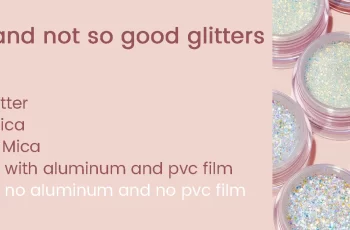
How to Layer Hyaluronic Acid and Vitamin C
Once you have found the right products for your skin, the real test to see how they perform is how you use them in your daily skincare routine. As daunting as it may feel, it really is quite simple and I’m positive that after reading today’s blog post and a bit of practise you’ll know how to layer hyaluronic acid and vitamin C together. Get ready to be blown away with the results!
Can you use vitamin C and hyaluronic acid?
Yes, you can! By combing these two ingredients together makes a potent blend of skin reviving duo. Hyaluronic acid and vitamin C, both of which complement each other effectively. By using a vitamin C enriched serum packed with antioxidants you can protect the skin barrier from free radical damage. following this with hyaluronic acid will result in the skin gaining a boost of hydration keeping the skin plumped, moisturised with a youthful bounce all day. Thanks to the humectant traits of hyaluronic acid, you won’t overwork the skin and ensure the complexion is looking its best and remaining at its healthiest state.
What goes first vitamin C or hyaluronic acid?
The general rule of thumb is when applying skincare products, you should start with the thinnest to thickest. This will determine when in your routine you’ll apply vitamin C and hyaluronic acid. With both ingredients you’ll find they are formulated into products that are usually one of the final steps of your daily skincare routine.
Having said that, vitamin C has a history of older formulations containing an unstable ingredient that could often cause mild skin irritation when used. Luckily the beauty industry has come on leaps and bounds in recent years with vitamin C taking on a new, stable, and effective role in all skincare formulations.
Speaking from experience I have found that serums enriched in vitamin C are generally thinner in consistency compared to others containing hyaluronic acid. This therefore results in hyaluronic acid being applied after vitamin C which overtime will lock moisture into the skin and keep the protective barrier fully functioning with the correct levels of water. With the protective barrier able to combat any damage caused by free radicals, such as pollution, central heating, and exposure to UV rays it will enable the potent vitamin C to work at repairing and revitalising the complexion.
In what order to use hyaluronic acid?
As I have previously mentioned, quite often you’ll find hyaluronic acid is formulated into skincare products that are applied at the end of your routine in the shape of serums and moisturisers. Knowing when to use HA in these formulas can feel a little confusing so here is a simple routine to follow:
Step One- Cleanser
Depending on your skin type and concerns you have with the skin you’ll find various formulas, from water, gels, balms, and lotions. Using a cleanser at the first step will ensure your skin is left clean with traces of makeup removed.
Step Two- Toner
Exfoliating toners are a personal favourite of mine, especially if they contain ingredients such as lactic acid and glycolic acid. Both AHAs can slough away dead skin cells and remaining traces of bacteria and makeup helping the skin to become completely clean.
Step Three- Serum
Once you have fully cleansed your skin, you can then apply a serum, and this can be a step that contains Hyaluronic acid or vitamin C depending on your product formulation. With the build-up of dead skin cells and impurities removed, you can expect to find your serums are able to penetrate further down into the lower layers of the skin which ultimately leads to you seeing results quicker.
Step Four- Moisturiser
This is another step that could potentially contain hyaluronic acid, but unlike serums, moisturisers work on the outer surface of the skin promoting the protective skin barrier to remain hydrated and healthy throughout the day. The physical barrier created by moisturisers will also benefit any other skincare products applied beforehand to work uninterrupted.
There you have a simple run down of which order to apply hyaluronic acid in your skincare routine. If you are wanting to learn more about hyaluronic acid and how it benefits the skin, you can check out our dedicated blog post!
Do you use hyaluronic acid before or after moisturiser?
The beauty of hyaluronic acid is the fact that it is a humectant, meaning it is able to draw in water from surrounding the area of the skin and other product formulations. This basically means that it doesn’t really matter whether you apply hyaluronic acid before or after moisturiser as your skin will still reap the rewards and remain plumped, hydrated, and healthy for the rest of day.
Which is better hyaluronic acid or vitamin C?
Both ingredients are amazing for the skin and giving your complexion the best chance of looking and feeling its best. They both work at combating different areas and concerns of the skin and when teamed together can become quite the power couple.
Hyaluronic Acid
By naturally occurring in the body, hyaluronic acid is one of the few skincare ingredients that can be used by all skin types, even the sensitive. Praised for its skin hydrating properties this humectant can draw water into the skin from the surrounding area and lock it into place. This not only helps keep the skin surface hydrated and looking youthful but can help combat any exposure the complexion has to free radicals found in environmental aggressors such as pollution, UV rays and alcohol to name a few.
Vitamin C
Vitamin C is packed with antioxidants allowing it the ability to combat any signs of dark spots and hyperpigmentation. When applied to the skin vitamin C will leave the complexion rejuvenated, glowing and flawless. For some skin types they could be mild irritation once you have applied vitamin C which is why teaming it with a hydrating hyaluronic acid you will tackle any signs of dryness and help boost making any vitamin C serum more effective at targeting areas of concern in the skin.
So, as you can see both ingredients vary in how they treat the skin with their unique abilities at targeting various areas of concern and deliver the optimal results, giving you the best skin you’ve ever experienced.
What can you not mix with hyaluronic acid?
There really aren’t many skincare ingredients that hyaluronic acid can’t be used with! Due to the fact it is naturally occurring in the body it is perfectly safe to use for any skin type. However, there could be the possibility that any other ingredient you use with hyaluronic acid may not want to play nicely. Therefore, you must always ensure when you are introducing a new ingredient or product to your routine you first perform a patch test for 24 hours before application. Should you have any further concerns you should consult with a doctor or dermatologist for peace of mind your skin will remain happy and healthy.
What can you not mix with vitamin C?
Potent ingredients such as retinol, glycolic acid and other chemical exfoliants such as the BHA salicylic acid should not be mixed with vitamin C. This doesn’t mean however you are not able to use these ingredients in your routine. By alternating when you use this cocktail of skin benefitting ingredients, you’ll be giving your skin the best treatment without any drying or irritating side effects.
For example, use a vitamin C serum in your morning routine allowing your skin to glow all day and have the protection of the antioxidant benefits. Follow this with retinol during your evening routine to help repair any damage and allow this UV sensitive powerhouse work overnight whilst you catch up on your beauty sleep. Not forgetting of course, to team this with a hydrating serum packed with hyaluronic acid and you’ll be amazed with your results.
Can I use too much hyaluronic acid?
This may sound slightly strange, but believe it or not, you can have too much of a good thing! The temptation to slather the skin with lashings of hyaluronic acid can feel almost impossible to resist. But if the skin has too much HA in an environment that lacks enough moisture and humidity in the air you will find hyaluronic acid begins to draw water out of the lower layers of the skin. This then leads to signs of ageing, such as fine lines and wrinkles become even more prominent, and your skin is left very thirsty! When using hyaluronic acid, it is best to follow the instructions of the product for the best results.
There you have a better understanding of how to layer hyaluronic acid and vitamin C together, don’t forget if you have any questions please come and follow us on Instagram. One last thing- are you up to date with the latest episode of The Green Sofa, check us out on YouTube now!


